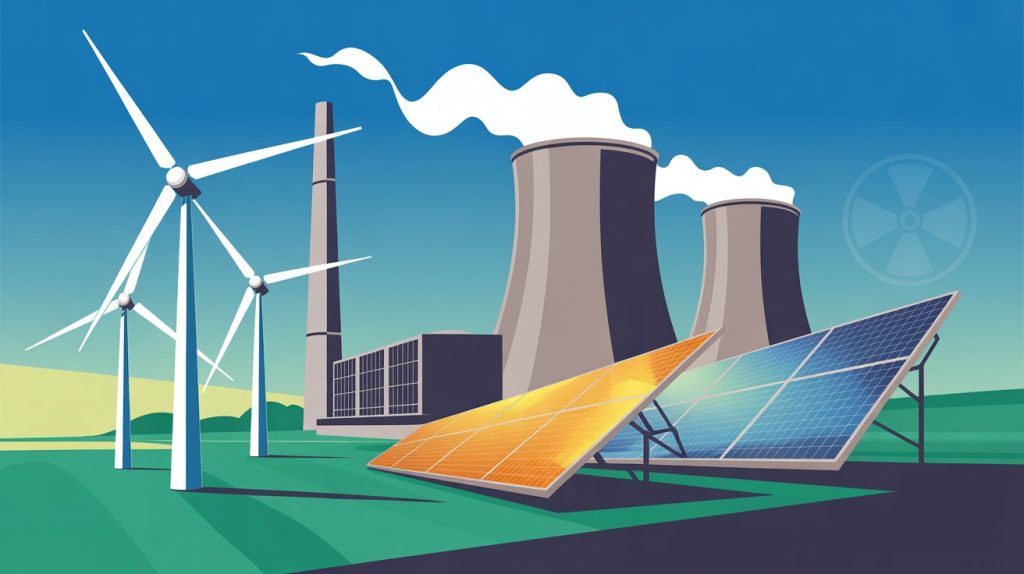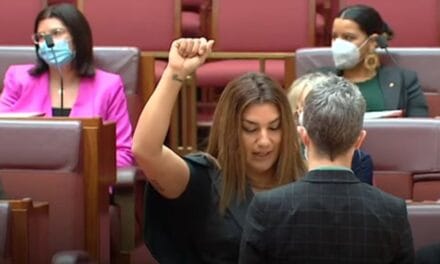Australia’s Liberal Party will no longer back a firm net zero emissions target by 2050. Instead, it will campaign on cheaper, more “reliable” energy and rolling emissions cuts if it wins the next election.
Opposition leader Sussan Ley confirmed the Liberal net zero policy change after a marathon series of party meetings in Canberra this week.
Ley said a future Coalition government would remove Labor’s legislated 43 per cent emissions reduction target for 2030 and delete the 2050 net zero goal from the Climate Change Act. Australia would stay inside the Paris Agreement, but without a fixed long-term target.
She told reporters net zero “would be a welcome outcome” if technology, markets and consumer choice could deliver it, but argued a locked-in date no longer made sense for the opposition.
The decision ends the bipartisan net zero consensus that stood since the Morrison government adopted the 2050 target in 2021. It also brings the Liberals into line with the Nationals, who recently voted to drop net zero from their platform.

Parliament and power, ai image via NewsBlaze
Liberals Drop Net Zero Target After Months of Internal Dispute
The shift follows months of internal argument between Liberal moderates and conservatives over the party’s climate direction.
Media reports indicate a majority of the party room supported scrapping the target, although moderates say the split is much closer.
A five-hour party room meeting, followed by a shadow ministry session, settled the question this week. Ley emerged to announce that the Liberal net zero policy would no longer include a 2050 goal.
Several moderate MPs, including Senator Andrew McLachlan, signalled they will keep advocating net zero, even while they accept the new frontbench position.
The Nationals had already voted to remove net zero from their federal platform, arguing targets lock in costs for regional communities. State Nationals in New South Wales now intend to follow.
What The New Liberal Net Zero Policy Proposes
Under the revised Liberal net zero policy, a Coalition government would strip Labor’s 43 per cent by 2030 and 82 per cent renewables targets from law.
The party says it will instead set its own emissions goals once in office. Those goals would be expressed as rolling, Paris-aligned reductions, benchmarked against “comparable countries” rather than a fixed net zero date.
Ley and energy spokesman Dan Tehan want a “technology-neutral” energy mix that can include coal, gas, renewables and nuclear. They argue existing coal generators should stay open longer if they remain commercially viable, with new gas projects supporting both industry and the grid.
The policy points to carbon capture and storage and other industrial technologies as key tools for cutting emissions, but offers few costed details so far.
Different Messages for City, Suburban and Regional Voters
The change appears designed to appeal to outer-suburban and regional voters under pressure from higher interest rates and rising prices. Ley links the Liberal net zero policy reversal to “energy abundance” and cheaper power bills.
In the mortgage belt, Coalition strategists believe voters care first about bills and blackouts rather than distant climate pledges. Lower-cost power and support for heavy industry feature strongly in the new language.
Inner-city seats tell a different story. Teal independents and climate-focused voters in electorates such as Wentworth, Kooyong and Curtin already punished the Liberals in 2022 over climate concerns, and again at the 2025 election.
Teal MPs now describe the decision as a “capitulation” on climate, and warn it will make the party unelectable in city-based seats.
In coal and gas regions, the reaction is more mixed. The Nationals and some local business leaders say dropping net zero sends a message that existing industries still matter, while critics argue it offers communities little clarity beyond the next election cycle.
Business and International Reaction
Business groups responded cautiously. The Australian Industry Group warned that frequent policy changes increase risk for companies planning multi-billion-dollar projects over several decades.
The Business Council of Australia supports net zero by 2050 and has previously called for clear long-term signals to guide investment. Environmental and union groups say the reversal could deter clean-energy projects and threaten jobs in emerging industries.
Internationally, critics point to the Paris Agreement’s “no backsliding” principle. Analysts note that the agreement’s temperature goals imply global net zero around mid-century, raising questions about how Australia will justify weaker domestic targets while remaining a signatory.
Prime Minister Anthony Albanese labelled the Liberal shift a “clown show” and argued it risks investment, regional relationships and Australia’s standing with Pacific neighbours that see climate change as an existential threat.
Pressure From The Right, Including One Nation
The Liberal move comes after sustained pressure from the party’s right flank and from minor parties that oppose net zero outright.
Pauline Hanson’s One Nation campaigns to “abolish Australia’s Net Zero by 2050 policy” and calls for withdrawal from the Paris Agreement. The party backs coal, gas, hydro and nuclear as long-term energy sources.
Support for One Nation doubled at the May 2025 federal election, and the party now holds four Senate seats after surprise wins in Western Australia and New South Wales.
Polling since the election places One Nation somewhere between 10 and 14 per cent nationally, much higher than its election primary vote and in some surveys ahead of the Greens. Analysts say much of that support comes at the Coalition’s expense.
Hanson welcomed the Liberal move but called it a “smoke and mirrors game” because the party remains in the Paris Agreement and still speaks about eventual net zero. “One Nation has set the agenda by demanding an end to net zero,” she said.
A separate NewsBlaze.com.au report examines One Nation’s rising vote and what it means for the broader conservative map.
Government and Climate Advocates Attack The Shift
Labor, the Greens and climate groups framed the reversal as a retreat from responsible climate policy.
Greens senators argue the decision will make emissions cuts harder and more expensive later, because businesses delay investment when targets look uncertain.
Former Liberal prime minister Malcolm Turnbull described the move as a “Trumpian campaign against renewables” and said it shows the party is not serious about climate change.
The Climate Change Authority and other experts also criticised the plan, warning it could breach the spirit of Australia’s international obligations and undermine investor confidence in the energy transition.
Unanswered Questions in The Liberal Net Zero Policy Blueprint
Ley and Tehan promise a detailed blueprint before the next election. That document is expected to outline sector-by-sector emissions pathways, the role of nuclear power, and how much the Liberal net zero policy shift might cut household bills.
For now, voters know what the party plans to repeal but not the full detail of what will replace it. Key questions remain about the size and timing of any price relief, the scale of future emissions cuts, and the way the opposition will defend its Paris position.
Those answers will shape how city, suburban and regional voters judge the Liberal net zero policy reversal when they next return to the polls.




